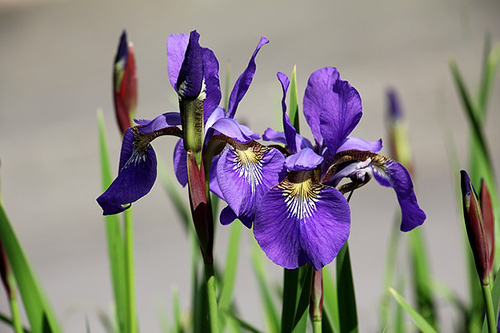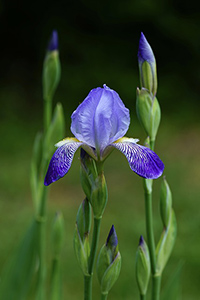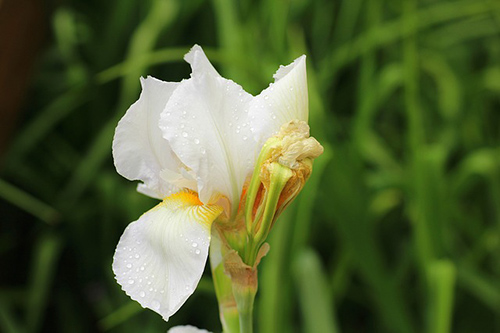Contents
The great Greek physician, pharmacologist, botanist, and author Pedanius Dioscorides devoted a long paragraph in the first chapter of his De Materia Medica to the virtues of the iris plant. Andres de Laguna (16th century) translated Dioscorides’s works into Spanish and commented on them, remarking on their multiple properties, such as “wonderfully purging the brain when its juice is taken through the nose.” Some years later, the plant was forgotten; however, recently, its virtues have been extolled again.

Healing Properties and Indications
Its root contains 50 percent starch, mucilage, and a very aromatic essential oil that gives the plant its peculiar violet aroma. When fresh, the plant’s rhizome is a strong laxative but not so intense when dry. Due to its notable expectorant and antitussive properties, it is also used in several bronchial medicines. It is also a diuretic.
Iris Plant Scientific Facts

- Other names: Orris root.
- French: Iris, flambe
- Spanish: Lirio.
- Environment: It is native to southern Europe but naturalized on the whole continent. It is farmed throughout Europe and some American countries.
- Description: This is a vigorous plant of the Iridaceae family. It has a straight stem 50 to 80 cm high, at the tip of which grows attractive purple flowers. The rhizome is very thick.
- Parts of the plant used medicinally: The rhizome (underground stem) when dried.
How to use Iris
- Decoction with five to 20 g of dry rhizome powder per liter of water, boiling for ten minutes, then drinking two or three cups daily.

White Iris Plant
The white iris plant is another species of the botanical family. It is spread all along the Mediterranean coast and the Canary Islands, and its properties are similar to those of the common iris. Another variety of iris in Mediterranean areas is the pale iris (Iris pallida Lam.), whose flowers are light blue. The composition and properties of all three species are similar.
DISCLAIMER: All content on this website is presented solely for educational and informational objectives. Do not rely on the information provided as a replacement for advice, diagnosis, or treatment from a qualified medical expert. If you are pregnant, nursing, or have any preexisting medical concerns, talk to your doctor before using any herbal or natural medicines.
REFERENCES
- George D. Pamplona-Roger, M.D. “Encyclopedia of Medicinal Plants.” George D. Pamplona-Roger, M.D. Encyclopedia of Medicinal Plants. Ed. Francesc X. Gelabert. Vols. 1 San Fernando de Henares: Editorial Safeliz, 2000. 315. Print.
- National Institutes of Health, National Center for Complementary & Integrative Health https://nccih.nih.gov/
- WebMD https://www.webmd.com/vitamins/ai/ingredientmono-735/orris
- Frontiers in Pharmacology https://www.frontiersin.org/articles/10.3389/fphar.2019.00507/full
